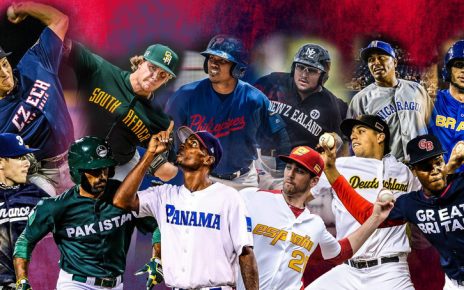In a season full of surprises, the 2025 MLB campaign is being reshaped not by the usual All-Star veterans but by a new class of rising stars. These players, many of whom entered the year with little fanfare, are now impacting lineups, altering standings, and transforming struggling franchises into playoff contenders. Their emergence has not only energized clubhouses but also changed the way analysts interpret team ceilings and power rankings.
This new wave of talent signals a shift in league dynamics—one where potential is rapidly turning into performance. Here’s how the most exciting young players are rewriting expectations and reshaping the postseason picture.
Shifting Standings Through Breakout Bats
Jacob Wilson has become a revelation for the Athletics, who were widely expected to linger near the bottom of the AL West. Instead, Wilson’s consistent contact and elite discipline at the plate have propelled the A’s into competitive territory. After a blistering week where he hit .500, his season average surged to around .350—an astonishing figure that has helped the team keep pace with division heavyweights. His skill with the bat has not only produced runs but also lengthened the lineup, allowing veterans to hit in more favorable spots.
Over in Detroit, Spencer Torkelson is finally delivering on the promise that once made him a top draft pick. After early career struggles, he has adjusted his approach and now anchors a Tigers offense that ranks among the league’s most productive. His resurgence has been essential to the Tigers’ 26–15 start and their spot near the top of the American League standings. These performances have dominated the latest MLB news, reshaping how analysts view team trajectories and divisional balance.
Another player raising eyebrows is Kristian Campbell, who debuted this season with the Red Sox and immediately became a fixture. His impressive April numbers earned him AL Rookie of the Month. More importantly, Campbell’s approach at the plate has added stability to a lineup that has at times lacked consistency in recent seasons. Paired with rising prospect Roman Anthony, Boston’s youth contingent is bringing results sooner than anticipated.
Young Pitchers Taking Command
On the mound, several young arms are influencing game outcomes far beyond what their experience levels might suggest. Orion Kerkering, a rising reliever for the Philadelphia Phillies, has carved out a role in high-leverage situations. Though not yet a closer, his command and late-inning poise have given manager Rob Thomson more flexibility in managing the bullpen. Kerkering’s rise has been bolstered by veteran J.T. Realmuto, whose praise of the young pitcher has amplified expectations across the league.
In Detroit, catcher Dillon Dingler has evolved into one of the league’s best defensive players behind the plate. His blocking, pitch framing, and quick release have made him a valuable asset not just for his defense, but for the development of Detroit’s young pitching staff. Dingler’s presence has also allowed the Tigers to control the run game more effectively—a detail that doesn’t show up in highlight reels but directly impacts wins.
Meanwhile, Tarik Skubal has quietly become one of the most reliable left-handers in the American League. Though not technically a rookie, his performance this year represents a breakout, with improved command and swing-and-miss stuff. The Tigers’ dominance in run differential owes as much to their young pitchers as it does to their improved lineup.
Farm System Graduates Turning Contenders
Youth development is no longer just about the long game—it’s about impact right now. The New York Yankees’ prospect George Lombard Jr. is drawing attention for his mature approach at the plate and leadership in the field. He’s poised to enter the big-league conversation sooner than expected. His defensive versatility and approach to the game have already sparked internal comparisons to past franchise leaders.
Arjun Nimmala, rising through the Blue Jays organisation, has become another name to watch. While not yet in Toronto, his athleticism and baseball IQ reflect a system that continues to produce high-upside talent. As the Blue Jays look to stay competitive in a tight AL East race, Nimmala’s development could influence mid-season roster decisions.
The Boston Red Sox—previously criticized for inconsistent talent pipelines—have found momentum. Roman Anthony, considered the No. 1 overall prospect by Baseball America, exemplifies their renewed focus on scouting and player development. His ascent validates the organization’s strategic shift and could soon translate into production at the major league level.
How Youth Impacts Power Rankings
The ripple effect of emerging stars is clear when examining current power rankings. Detroit, once a rebuilding club, now ranks among the top five in multiple national publications. Their mix of young bats and sharp pitching has disrupted the traditional AL Central hierarchy. In the AL West, Oakland’s rise has unsettled teams like Seattle and Houston, who now must contend with a scrappy, young team gaining confidence with each series.
These rankings are no longer driven solely by payroll or veteran experience. Instead, metrics like WAR, exit velocity, and pitch quality from under-25 players are influencing week-to-week movements. Analysts are giving greater weight to roster upside, with young contributors often tipping the scale in tight comparisons. This evolution reflects a broader understanding of how quickly young talent can swing outcomes.
Moreover, fan interest around these players is driving engagement. Ballparks are seeing increased attendance when rising stars are featured. Jerseys are flying off the shelves for names that weren’t even in MLB two years ago. As these players become faces of their franchises, marketing strategies and even trade decisions are shifting in response. Reputable online sportsbooks like FanDuel have also taken notice, adjusting futures markets and weekly matchup odds as these breakout performers begin to reshape expectations.
What This Means for the Rest of the Season
The growing influence of rising stars means front offices must adjust expectations mid-season. Clubs that entered 2025 in rebuilding phases now find themselves in wild-card contention, while established contenders are being challenged by unheralded lineups. The development curve has shortened, and success now demands more aggressive promotion timelines and in-season adjustments.
It also raises the bar for player development. Organizations can no longer afford to miss on top picks or mishandle prospects. As 2025 unfolds, the teams thriving are those with a clear plan for integrating youth—not just waiting for the future, but building around it now.
The power rankings may continue to shift, but one truth has become clear: this is no longer a league dominated solely by veterans. The future is arriving faster than anyone might have imagined, and it’s already reshaping the playoff race.




